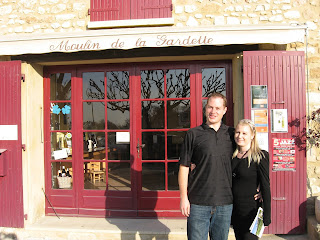The Tour de France is almost over already, and although I won't be making it past an estimated stage 5 (pending the amount of Cremants I can find from the Loire Valley in my area), I feel like I am way behind. Life has been crazy hectic in the Concubine household for the past few months: my husband was studying for an exam he wrote in late June and I solo parented so he could focus on studying, and then a plethora of visitors visited the unofficial "Concubine B&B" (now that would be one heck of a name for a B&B!) for a few weeks afterwards. Now that life is calming down a bit, I finally have time to kick off my #cremanttourdefrance and share my tastings!
I decided to start Stage 1 in the Limoux AOP. Located 25km south of the village of Carcassonne, the climate here is influenced by cooling breezes from the Atlantic Ocean, and four varied terroir styles due to its proximity to the Pyrenees foothills. Limoux is also the birthplace of a grape varietal called Mauzac, which is credited to have created the first sparkling wine by the monks of St-Hilaire in 1531. Because of this, Limoux is best known for its sparkling wines. Cremant de Limoux bubblies are generally made using a blend of up to 90% Chardonnay and Chenin Blanc. Secondary grape varietals like Mauzac and Pinot Noir are allowed in the blend to a maximum of 20% (Pinot Noir is allowed up to 10%). Cremant de Limoux is vinified using "Methode Traditionelle", which means that a second fermentation occurs within the bottle, the same way official Champagne is crafted.
One of the most prominent wineries to craft Cremant de Limoux is Domaine Delmas, located 20 minutes south of Limoux in the village of Antugnac. Their focus is on both Cremant and Blanquette de Limoux wines, but also vinify a still Pinot Noir and Chardonnay.
The Cuvee des Sacres Delmas is composed of Chardonnay, Chenin Blanc, Pinot Noir and Mauzac. Honeyed notes of banana, melon, and a hint of toasted almonds dance on the palate. The bracing acidity on this cremant, as well as the aggressive mousse, pairs well with rich cheeses and seafood in cream sauce. But don't let the intensity fool you; this gem is very approachable and easy to drink!
Limoux is also known for creating another type of bubbly named "Blanquette de Limoux". Blanquette wines are vinified from the Mauzac grape, with a bit of Chardonnay blended in. The wine is aged for 8 months on its lees in old oak barrels.
The 2011 Cuvee Memoire Blanquette de Limoux also starts off with aromas of honeyed stone fruits, but the flavour profile changes to green apple, lime zest and a strong, steely backbone on the palate. Delicate bubbles (aka "mousse") and crisp, yet refreshing acidity round out the mouthfeel, leading to a strong finish. I enjoyed the Cuvee Memoire on a hot summer's evening, relaxing on my back deck. It was the perfect pairing!
From there, my tour traveled east to Bordeaux. Cremant de Bordeaux was established as an appellation in 1990. The wine varietals allowed in the blend are Sauvignon Blanc, Semillon, Ugni Blanc, Colombard, and Muscadelle, creating a more unique flavour profile than what can be found in other Cremant appellations.
And a very unique flavour profile was delivered with the Xavier Milhade Cremant de Bordeaux! A blend of Sauvignon Blanc, Semillon and Muscadelle, prominent floral aromas lead into notes of navel oranges and cantaloupe melon, encased in a mineral mid-palate. The acidity was racy, with delicate mousse. This wine was a treat for me as Cremant de Bordeaux wines are very hard to find in my location!
Now that I have cycled through the better part of Southern France, it's time to head north towards the Loire Valley. Stay tuned for Stage 3, in the coming few weeks!
And a very unique flavour profile was delivered with the Xavier Milhade Cremant de Bordeaux! A blend of Sauvignon Blanc, Semillon and Muscadelle, prominent floral aromas lead into notes of navel oranges and cantaloupe melon, encased in a mineral mid-palate. The acidity was racy, with delicate mousse. This wine was a treat for me as Cremant de Bordeaux wines are very hard to find in my location!
Now that I have cycled through the better part of Southern France, it's time to head north towards the Loire Valley. Stay tuned for Stage 3, in the coming few weeks!
Cheers!













